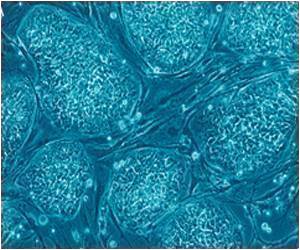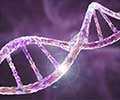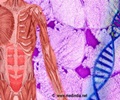Hundreds of mutations exist in leukemia cells at the time of diagnosis, but nearly all occur randomly as a part of normal aging and are not related to cancer, new research shows.

The research is published July 20 in the journal Cell.
"Now we have a very accurate picture of how acute leukemia develops," says senior author Richard K. Wilson, PhD, director of The Genome Institute at Washington University. "It''s not hundreds of mutations that are important but only a few in each patient that push a normal cell to become a cancer cell. Finding these mutations will be important for identifying targeted therapies that can knock down a patient''s cancer."
The study is the first to investigate how often mutations typically develop in healthy stem cells in the blood. These immature cells in the bone marrow give rise to all the blood cells in the body.
AML is a blood cancer that develops when too many immature blood cells crowd out the healthy cells. In recent years, Washington University researchers at the Siteman Cancer Center at Barnes-Jewish Hospital and Washington University School of Medicine have sequenced the genomes of 200 patients with AML to try to understand the mutations at the root of the disease.
Without fail, each patient''s leukemia cells held hundreds of mutations, posing a conundrum for scientists, who have long believed that all the mutations in a cancer cell are likely to be important for the disease to progress.
Advertisement
To investigate the origin of these mutations, the researchers isolated blood stem cells from healthy people of different ages. The youngest were newborns, and the oldest was in his 70s.
Advertisement
"Mutations are known to develop in cells as we age, but no one had any idea how many mutations occur in blood stem cells and how frequently they develop," Link says. "These random, background mutations occur during cell division and are unrelated to cancer. Our DNA can tolerate a huge number of these hits without any negative consequences. But if a cancer-initiating event occurs in one of these stem cells, it captures the genetic history of that cell, including the earlier mutations, and drives leukemia to develop."
As part of the study, the researchers sequenced the genomes of 24 patients with AML and compared the mutations in their leukemia cells to those that occurred in the blood stem cells of the healthy individuals. The scientists were surprised to see that the total number of mutations varied by age, not by whether a patient had leukemia. Thus, a healthy person in his 40s had just about the same number of mutations in his blood stem cells as a leukemia patient of the same age had in his cancer cells.
The study''s results help to explain why leukemia occurs more frequently as people age.
"AML is relatively uncommon until about age 60," says co-first author John Welch, MD, PhD, assistant professor of medicine. "It is the persistent, random accumulation of mutations in blood stem cells that contributes to the risk of the disease."
By sequencing the genomes of the AML patients, the researchers also were able to identify 13 novel "driver" mutations that are likely to be important for leukemia to develop in other patients. They also identified a number of additional cooperating mutations that work together with the driver mutations to give blood stem cells a growth advantage over other cells. In many patients, it appeared that in addition to an initiating driver mutation, only a one or two additional cooperating mutations were important for cancer to occur.
While the findings are important to leukemia, they may also hold true for other cancers.
"Our study does not provide proof that this model applies to other cancers," says corresponding author Timothy Ley, MD, professor of medicine and of genetics. "But this research suggests that scientists should look. This model could explain the large numbers of mutations we and other researchers are finding in breast, lung and other cancers. The idea that the vast majority of mutations occur in a cell before it becomes cancer is completely novel and should be explored further."
Welch JS, Ley TJ, Link DC, Westervelt P, Walter MJ, Graubert TA, DiPersio JF, Ding L, Mardis ER, Wilson RK et al. The origin and evolution of mutations in acute myeloid leukemia. Cell. July 20, 2012.
The research is supported by the National Human Genome Research Institute (NHGRI U54 HG003079), the National Cancer Institute (P01 CA101937 and K99 HL103975) and the Barnes-Jewish Hospital Foundation.
Washington University School of Medicine''s 2,100 employed and volunteer faculty physicians also are the medical staff of Barnes-Jewish and St. Louis Children''s hospitals. The School of Medicine is one of the leading medical research, teaching and patient care institutions in the nation, currently ranked sixth in the nation by U.S. News & World Report. Through its affiliations with Barnes-Jewish and St. Louis Children''s hospitals, the School of Medicine is linked to BJC HealthCare.
Alvin J. Siteman Cancer Center is the only NCI-designated Comprehensive Cancer Center within a 240-mile radius of St. Louis. Siteman Cancer Center is composed of the combined cancer research and treatment programs of Barnes-Jewish Hospital and Washington University School of Medicine.
Source-Newswise













